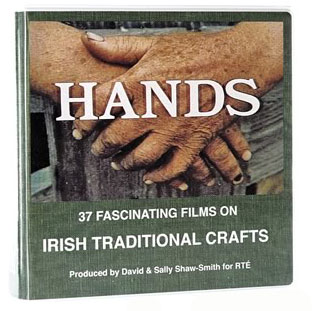
They listen. Sort of. This year I might receive a couple of interesting beers and some underwear to replace the elastic rags I pull on each morning.
But this year, I did purchase one gift for myself, the “Hands” DVD by David and Sally Shaw-Smith. This remarkable collection of 37 films shot during the 1970s and 1980s capture many of the disappearing traditional crafts in Ireland.
Each short movie focuses on a particular craft, from building Regency furniture to carriage making to stone cutting to leatherwork. If you work with your hands, you will be captivated by the stories, the filming and the people who are trying their best to keep these skills from vanishing.
The DVD set is sold by the good folks at Benchcrafted, and I’ve caught glimpses of it at the different shows during the last few years, including Handworks. I once had a set of the DVDs, but they have disappeared into my basement. So I purchased a replacement set this year. Yes, it’s a pricey set, but I know that you and your family will enjoy these films.
You can buy the set for $199 here.
Jameel and F.J. Abraham have put up three of the films on Vimeo for you to enjoy, free from advertising. Check out the film on cutting stone here.
Also a film on making the currach, a clever leather-skinned boat:
And a film on rural Fermanagh Country in Ireland.
Very highly recommended.
— Christopher Schwarz



















